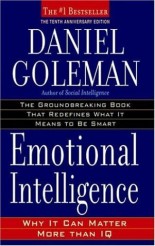Five failsafe tips to ensure successful international webinars
2 November 2012 By Northern Lights

 Have you taken part in a webinar with half a dozen nationalities from China to Silicon Valley – and all the challenges of varying quality of internet connections?
Have you taken part in a webinar with half a dozen nationalities from China to Silicon Valley – and all the challenges of varying quality of internet connections?
With flights grounded due to Hurricane Sandy and New York still not functioning normally, no doubt more people than ever are using this extremely useful business tool. But don’t think you can take a normal presentation and deliver it successfully over the internet.
Last week I was asked to deliver just such a presentation for our client, Worldmark – they make really clever parts for mobile phones and tablets, solving problems such as touchscreens that smear and smash.
I was asked to give a guest talk on ‘Finding the Win/Win in Communications’ for their fast track employees. Of course, with this topic it meant my own presentation had to be first class! No pressure.
1. Research the quality and tools of your webinar software
My first tip for the fast trackers was to research and prepare; know your audience, what interests them, what concerns them. In the case of the webinar, the global HR director invited me to attend another presentation so I could see how it all worked.
Worldmark uses Webex which allows video conferencing via the internet. This is a great piece of software that means you can have a powerpoint presentation alongside video presentation by the speaker and see everyone taking part in the event in small icons at the bottom.
What I could see from this was
– Internet connections in some countries are quite patchy – so voices came and went and it was easy to miss the critical point being made
– Everyone used English as the common language – but it is a second language for many of those taking part
– With the time differences around the world (late evening in China, early morning in Mexico) several people were using their laptops in their homes
– 40 minutes of presentation in this format is demanding – particularly if you are at home, it would be easy to be distracted!
2. Engage your audience to keep their attention
 Good speakers always engage their audience – tailoring content so it is relevant to delegates and asking questions, holding break-out sessions. This is all much harder to do in a global webinar.
Good speakers always engage their audience – tailoring content so it is relevant to delegates and asking questions, holding break-out sessions. This is all much harder to do in a global webinar.
One of my tips for the win/win in communications is to put yourself in the head of the person you are communicating with.
There were ten fast trackers taking part. I decided to give each of them a different question that they had to research before the presentation and then be ready to share their answer in the session. I gave them questions such as
– What is the best customer service you have ever experienced? Why was it so good?
– When do you lose concentration in meetings – why?
– How does Daniel Goleman’s book (Emotional Intelligence: Why it Can Matter More Than IQ)on emotional intelligence relate to communications?
I included Daniel Goleman because the fast trackers had been asked to read and analyse this book.
Throughout the presentation, I then brought in everyone with their questions in blocks of twos and threes. No-one knew when they would be asked so it kept them concentrating! And it meant they didn’t have to listen/look at one person throughout the 40 minutes. It brought real interaction into the format.
If there had been more people taking part I would probably have chosen half a dozen replies through the session (without warning who would be chosen) and shared everyone else’s replies by email or forum afterwards.
3. Use pictures and words – and yes, probably Powerpoint
I have been anti-Powerpoint for years, as this blog explains.
But the reality is that with language and internet challenges, you need to make it as easy for everyone to catch what you are saying – and a few clear words and lots of pictures helps the process.
I put a photo of myself and my name on the first slide. I didn’t use a lot of words on the slides and did use a lot of images to cheer up the screen!
I used this picture of gemstones to demonstrate that when presenting, you need to find your gems – that match the interests of your audience. Hopefully it made a memorable point.
The fast trackers gave very enthusiastic feedback to this talk – and the bit they liked most was asking them all to contribute throughout the session.
What gems can you share that will help us all to make our webinars work better for our audiences?

